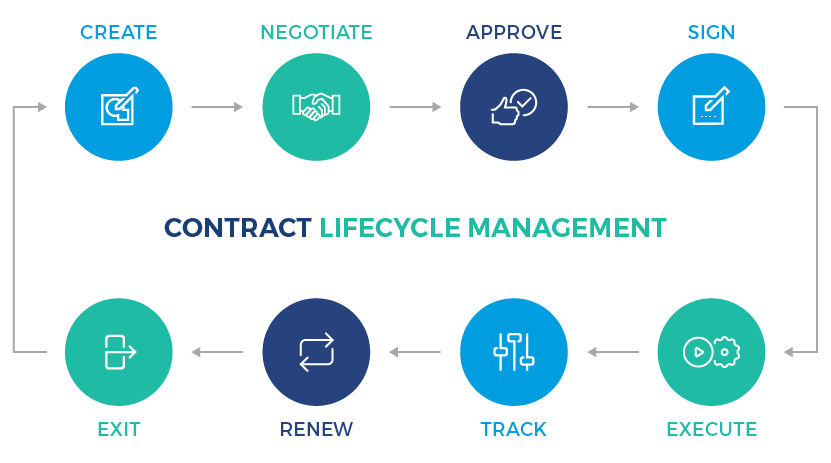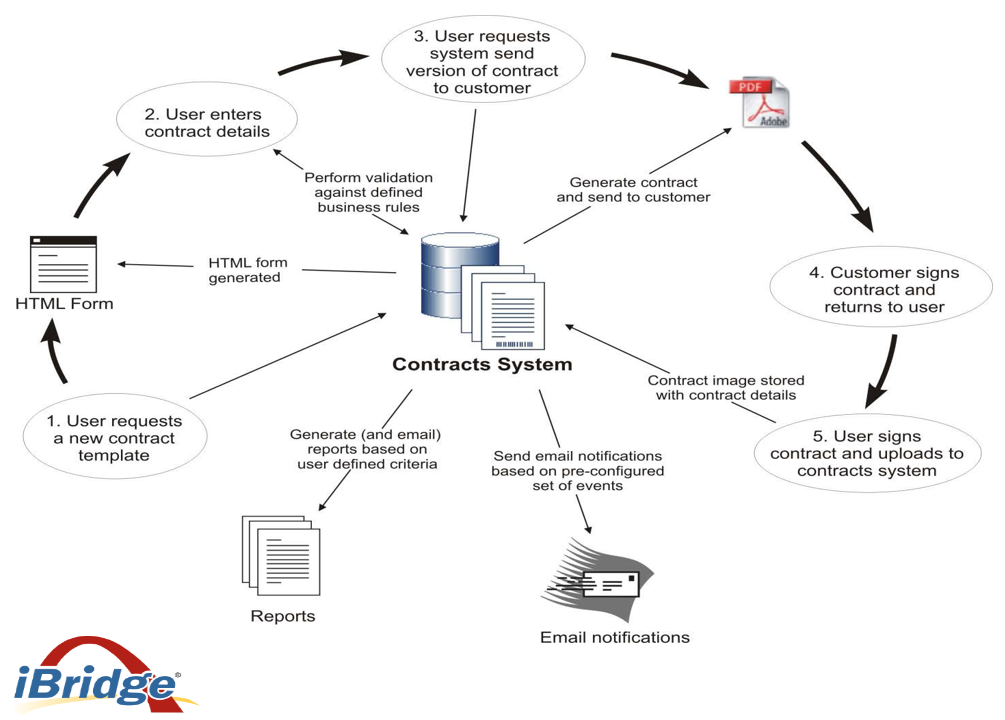- Category
- Blog
Each stage of a contract’s lifecycle must work at optimal efficiency for businesses to develop a framework of best practices. An automated contract management system can help streamline these processes, improve workflows, and reduce risk. Best practices are integrated with legacy programs and quickly rolled out across all departments.
How Best Practices Impact the 5 Stages of a Contract’s Lifecycle
Automated systems help streamline contract management tasks throughout the entire lifecycle of a document. There are five stages to a contract’s lifecycle, stretching from creation to storage. Well-designed solutions enhance best practices at every stage.
Creating Contracts
Centralized systems allow users to log in via standard internet browsers and create new contracts online. Customized HTML forms make drafting agreements easy and consistent. Users can enter data into open fields, text boxes, drop-down boxes, or radio buttons.
Companies can also create templates to maintain consistency and include all required legal terms.
Permission levels determine who can access or alter contractual details, such as the customer’s name, the commencement date, and the details of the service. By allowing varying levels of access, businesses can reduce the number of approval requests and increase productivity. For example, if the user is permitted to create or update specific details, he or she can perform the task quickly online without seeking additional approvals.
Negotiating Contracts
Negotiating the terms of a contract can quickly digress into a cluttered heap of email chains and faxed revisions. Smart contract management solutions simplify this process by logging all edits, responses, and revisions in one centralized database. Users can see when documents were downloaded, faxed, or emailed and who completed each action. This minimizes errors, which means negotiations can move forward smoothly.

Source: Pixabay
Signing Agreements
Businesses can employ barcode and image capturing technology to identify specific contracts, ensuring that each agreement matches its corresponding signature. Users can upload signed agreements directly to contract management systems and store them in centralized databases.
Storing Contracts
Paper contracts can become damaged, misplaced, or even lost when stored in filing cabinets. However, businesses can safely store digital copies in secure online databases and easily view, update, and edit them whenever necessary.
A centralized, automated system gives businesses access to a contract’s entire history, regardless of staffing changes. This allows businesses to monitor contractual agreements over time with greater consistency. The terms and conditions within each contract are automatically tracked, and renewal alerts are sent to relevant parties. Automating these processes reduces the number of manual tasks and develops a series of robust best practices.
Reporting
The speed and ease at which a centralized system can find and categorize contractual data allow users to focus on analyzing reports and projecting trends instead of conducting manual searches. By reducing the time spent searching databases, businesses can create a framework of best practices that better utilize the employee’s time.
Compliance and Integration
Integrating systems with existing programs enhance best practices. A comprehensive contract management system that updates, verifies, and monitors compliance issues can help reduce human error and mitigate risk.
An integrated contract management system that works with existing sales, procurement, and marketing teams can streamline processes across all departments. Users can initiate billing requests seamlessly, kick-off downstream delivery workflows quickly, and track sales data.






